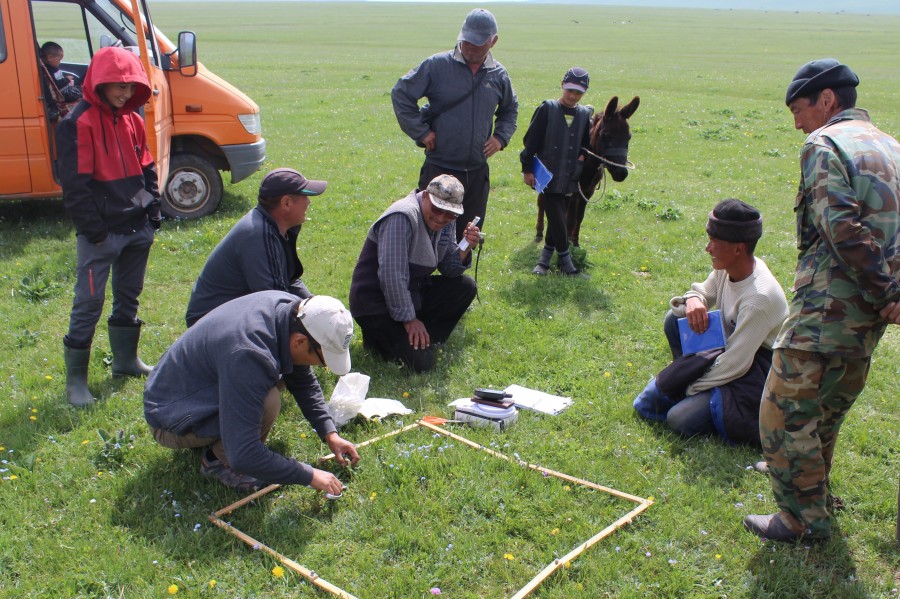
The prevention of further deterioration of resources requires effective management, including monitoring of pasture conditions, development of management plans and their execution taking into account the productivity of the land. But this process is hampered by the limited qualifications of members of the pasture committees and the lack of unified methodologies for monitoring and evaluating resources.
The Pastures and Livestock Breeding Department (PLBD) of the Ministry of Agriculture of the Kyrgyz Republic has come forward with the initiative of creating a common system of monitoring and assessing pastures. The work on providing expert support to the Pastures and Livestock Breeding Department of the Ministry of Agriculture of the Kyrgyz Republic in creating their methodology was started within the framework of this project.
A unified methodology was developed by the interdisciplinary working group (IWG) approved by the order of the Ministry of Agriculture of the Kyrgyz Republic. The IWG consisted of specialists from the Pastures and Livestock Breeding Department of the Ministry of Agriculture of the Kyrgyz Republic (PLBD) of the Ministry of Agriculture of the Kyrgyz Republic, Biodiversity and Protected Areas Conservation Department of the Ministry of Nature Protection of the Kyrgyz Republic, Forest Service of the Kyrgyz Republic, Kyrgyz Scientific and Research Institute of Livestock and Pastures (KSRILP), State Design Institute for Land Management (Kyrgyzgiprozem), ARIS, Central Asian Institute for Applied Earth Studies (CAIAG). The task of the IWG was to develop a unified methodology within a year, test it in practice in selected Aiyl Aimaks and further disseminate it throughout the country. During this time, IWG members held five meetings to discuss the unified methodology, participated in three trainings on GIS and tested the methodology in the field for seven days.
In determining the basis of the unified methodology, the positive experience of the CAMP Alatoo PF was used after the application of the PRAGA approach developed by FAO and the International Union for Conservation of Nature. It was based on the “measuring rod” method for assessing the projective cover of pastures. Using a one meter long measuring grid, a resource user through the mowing method can point-by-point collect data on resource condition using commonly accepted indicators. The biomass collected from 1 m² at the monitoring point is divided into palatable and non-palatable grass (edible and non-edible grass by livestock).
The unified method has six steps, including preparatory work, selection of monitoring points, procedure for collecting data on pasture indicators and interpretation of results. In addition, the document included additional information, for example, on pasture types and characteristics, as well as a glossary, illustrations and photographs of soil erosion types. Instruction about the pasture assessment and monitoring was developed taking into account the capacity of local institutions responsible for the provision and control of pasture resources - pasture committees or leskhozes, for which monitoring based on this methodology has become an easy and accessible process.